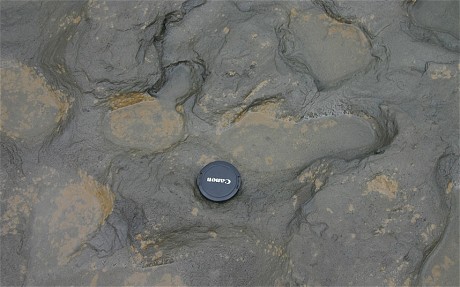
HAPPISBURGH, ENGLAND—Erosion along the coast of Norfolk in eastern England has revealed footprints thought to have been left behind by a group of Homo antecessor individuals some 900,000 years ago. The tracks were made by at least five different hominids. “In some cases we could accurately measure the length and width of the footprints and estimate the height of the individuals who made them….This height range suggests a mix of adults and children, with the largest print possibly being male,” Isabelle De Groote of Liverpool John Moores University told The Telegraph. The scientists took 3-D scans of the prints when they were revealed during a low tide after stormy seas last spring, but it was not possible to preserve them. At the time the prints were made, the area was an estuary of the Thames River, surrounded by salt marsh and coniferous forest. The weather would have been cold, requiring clothing, shelter, and the ability to make fire. Flint tools and fossil remains of rhinos, hyenas, and mammoths were also found at Happisburgh.









